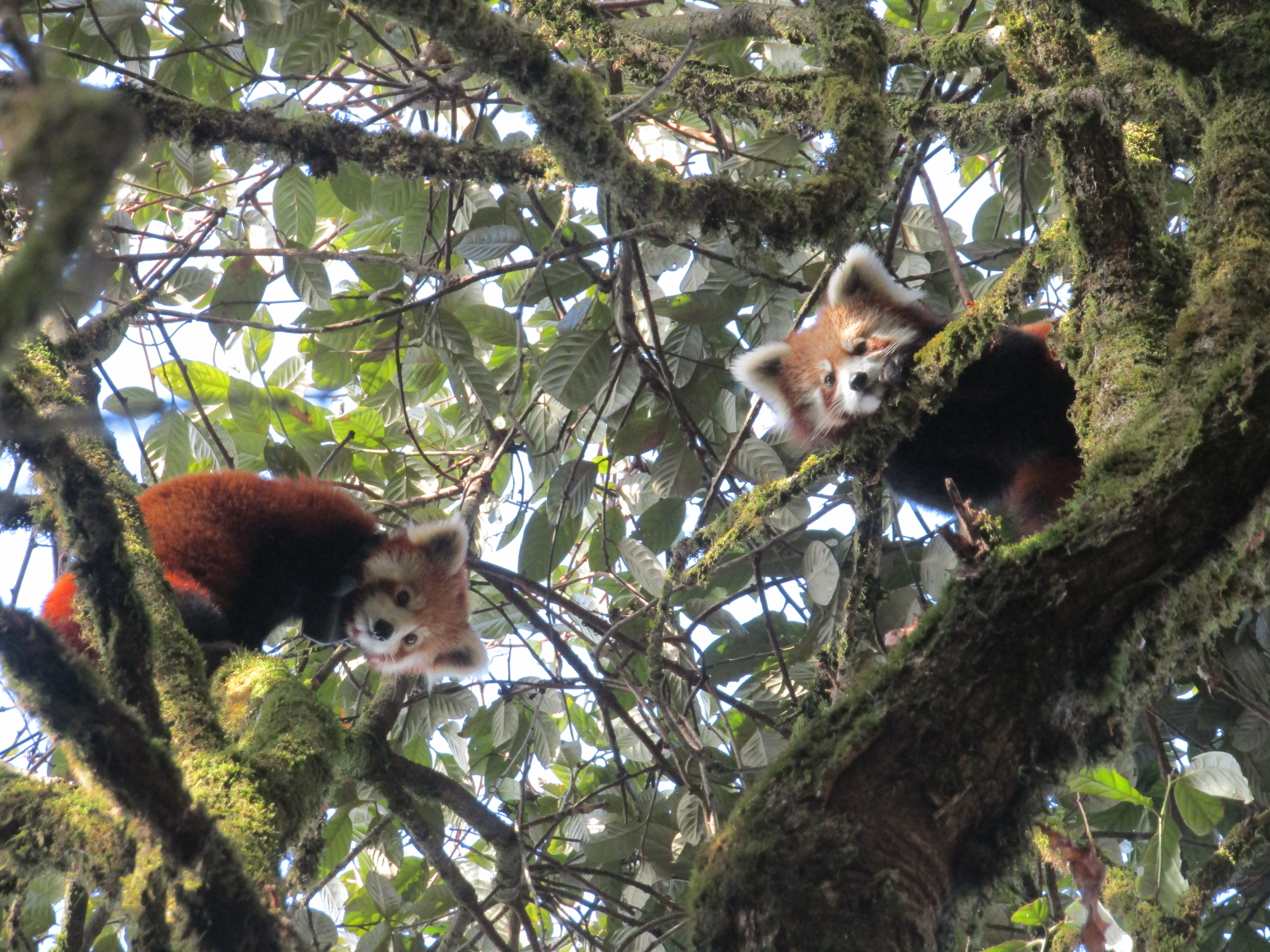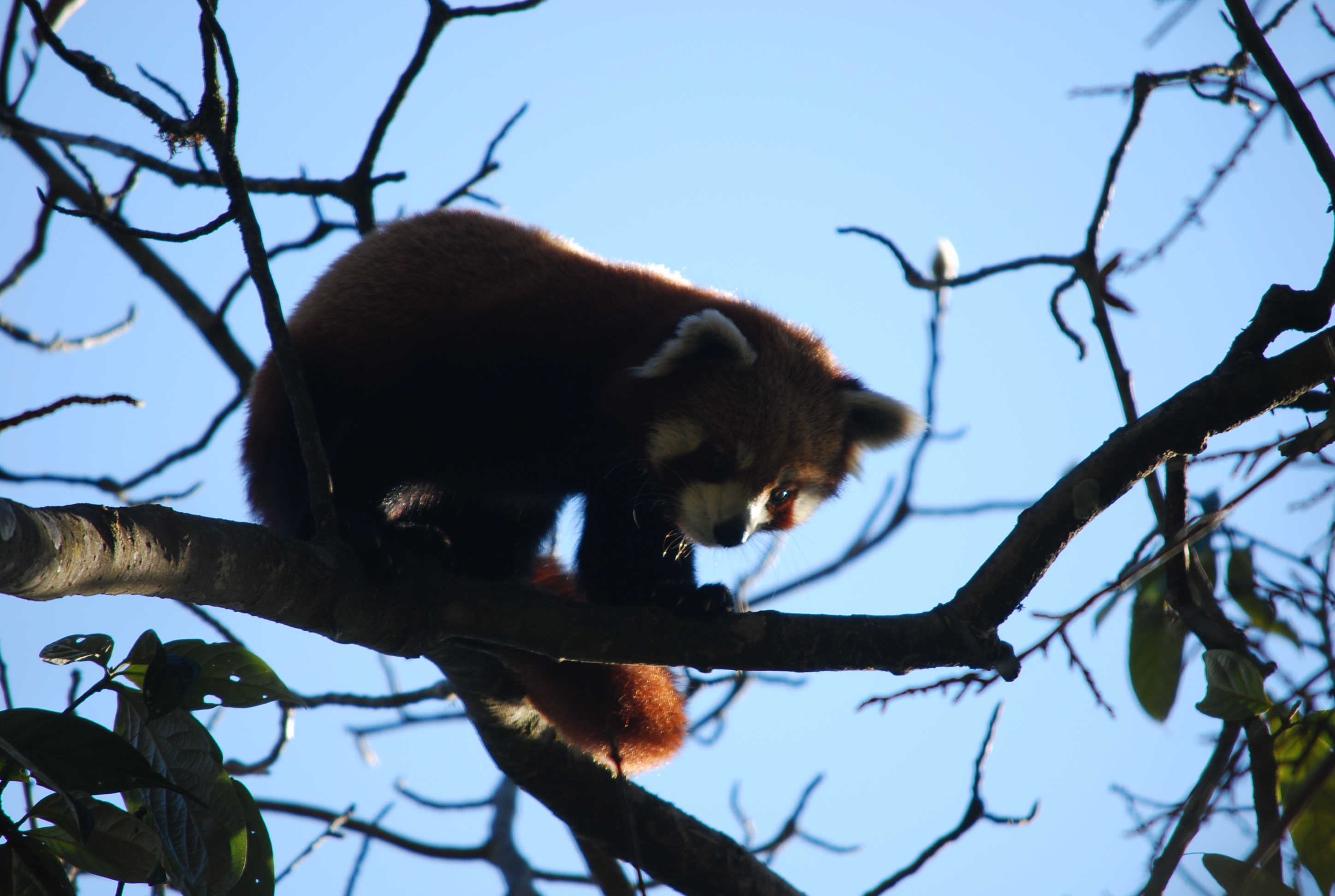24 Red Panda Facts for the New Year
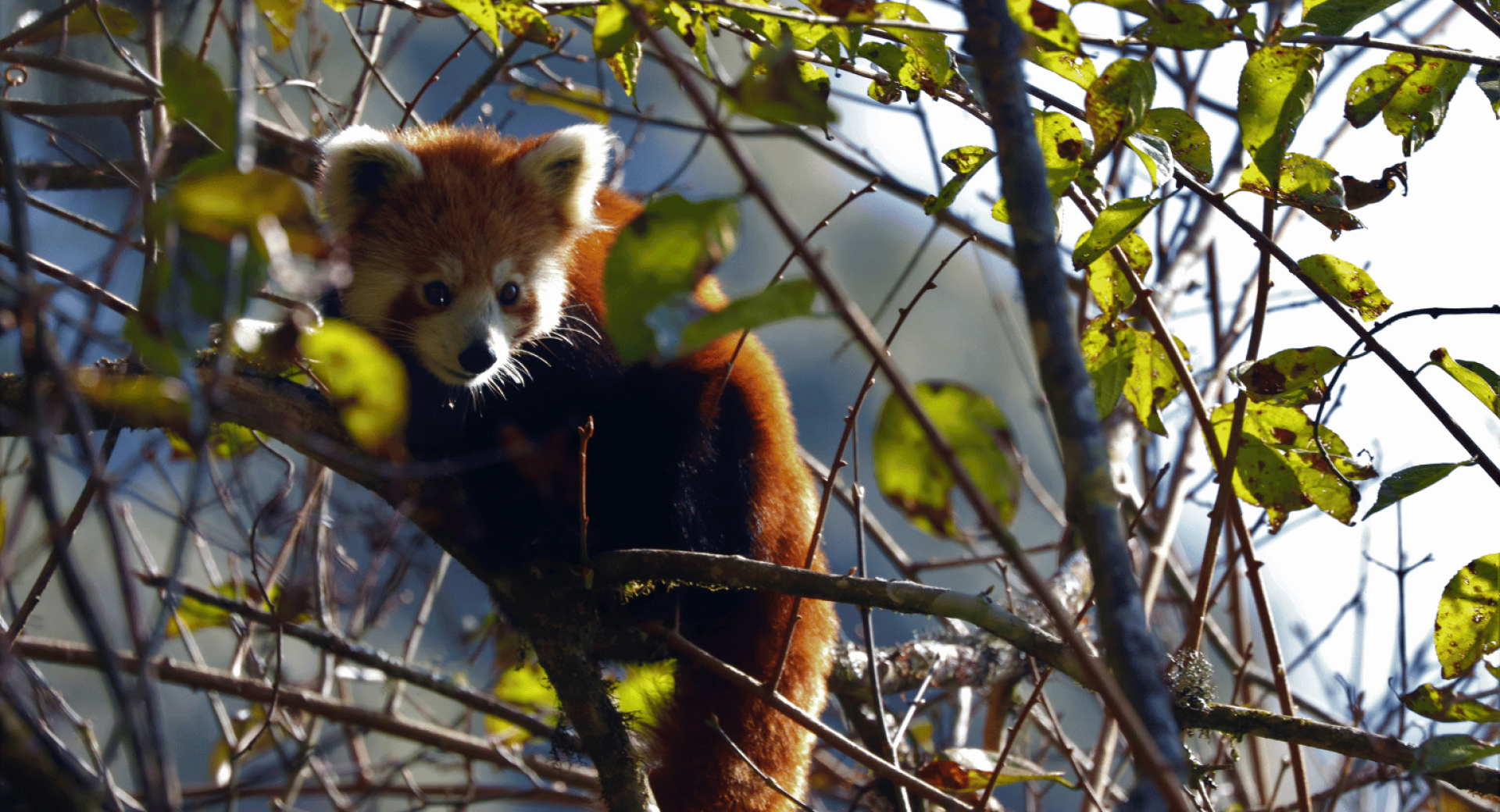
The characteristic cute faces of red pandas are enough to cause people to fall in love with these endangered animals. However, there are so many other reasons why red pandas need to be protected. Read on for 24 interesting facts that make red pandas so unique!
1. There are two species of red panda – the Himalayan red panda, Ailurus fulgens, and Chinese red panda, Ailurus styani – the only two species found within the genus Ailurus.
2. The Himalayan red panda and Chinese red pandas are thought to have genetically diverged around 250,000 years ago from a glaciation event in the Pleistocene era. French zoologist Frederic Cuvier decided on the scientific name of Ailuris fulgens in 1825. Ailuris is adapted from the ancient Greek word for cat and fulgens, meaning shining and bright in Latin.
3. Most people recognize red panda as the most common name for these animals, they have also been called the red cat-bear, the lesser panda, the first and original panda, and the firefox. The latter name is actually why the logo for the search engine is a red panda.
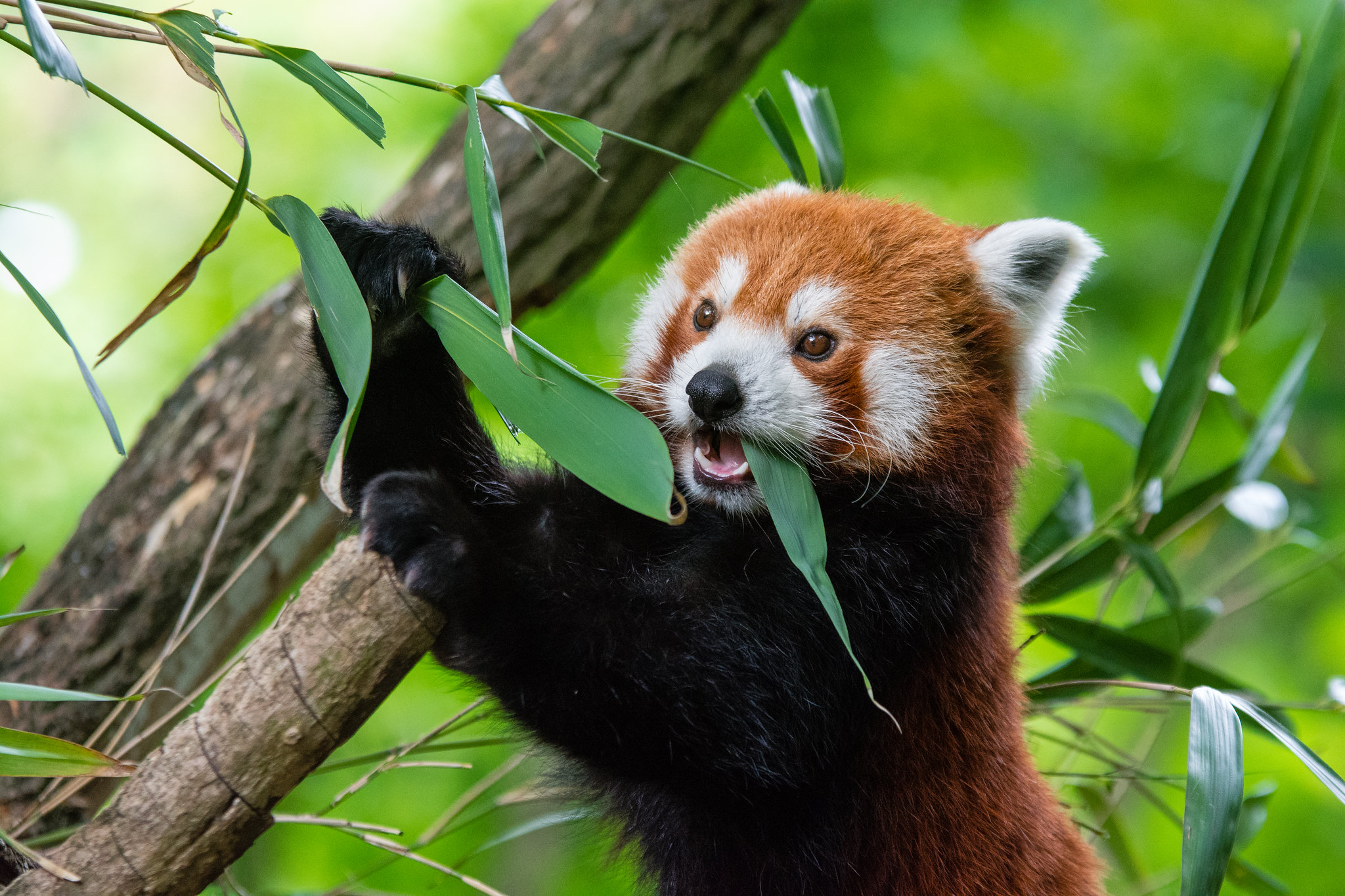
The first and original panda. © Mathias Appel
4. The name panda is thought to be derived from the Nepali word “ponya” which translates to bamboo or plant-eating animal. This is believed to be why giant pandas share the same name due to their similarities in anatomy and diet. However, red pandas remain the original panda!
5. Fossil evidence suggests red pandas have close relatives to Procyonidae (raccoons), while molecular evidence suggests that they are related to Mustelidae (weasels) and Mephitidae (skunks). Because of these relations, they are in the dog-like carnivore category.
6. Red pandas are most active at dawn and dusk (crepuscular), which helps them avoid predators and conserve their energy during hot summer months. They will often be seen curled up in winter or stretched out on branches in summer, sleeping during the day.
7. Red pandas like to self-groom themselves, just like a typical house cat! They do this by licking their hind and fore paws and cleaning their face in very similar positions to what cats do.
8. The soles of red panda feet have glands that secrete a liquid that allows other red pandas to tell who’s been where. They use the tip of the underside of their tongue with an enlarged papilla to identify the secretions from other red pandas. They are currently the only known carnivore with this adaptation!

A wild red panda stretched out on a branch in Nepal. © Red Panda Network (RPN)
9. Red pandas can be seen in “boxing matches” during mating season. Although they are typically solitary animals and not aggressive, males may go on their hind legs and swat at other males when fighting over a female.
10. Red pandas typically show aggression by arching their backs and lowering their heads however, when necessary, they are not afraid to use their paws!
11. There are seven well-documented noises that red pandas make in specific circumstances. These include high-pitched whistles newborns use to get their mom’s attention, “huff-quacks” during “boxing matches,” and bleats and twitters made during breeding seasons.
12. Red pandas’ reddish-brown fur and white markings blend into the red moss and white lichens found in the trees they spend most of their time in. Many red pandas also have black fur on their bellies and legs to blend into the dark tree canopy from predators looking up.
Wild red pandas photographed during ecotrip in Nepal. © RPN
13. Red pandas glow in the dark! That's right, the white on the red panda's face is “almost luminescent” and can guide a mother's lost cubs in the darkness. This, along with the whistles cubs make, helps keep them safe by mom.
14. The reddish 'tear tracks' extending from the red panda’s eyes to the corner of their mouth can help keep the sun out of their eyes. This is important during winter, when the strong reflection of the snow may affect their vision.
15. During the cold winters in the Himalayas, red pandas use their dense tails to wrap themselves up and regulate their body temperature. The nose is the only part of their body not covered in fur, which is why having a fluffy tail to cover their nose is so important – like a scarf!
16. Their impressive tails also help them balance and have such great agility on tree branches.
As arboreal specialists, red pandas are built for life in the trees. © RPN
17. Red pandas have a false thumb (sesamoid bone of wrist), which helps them be avid bamboo eaters and efficient tree climbers – they can even climb down headfirst! Giant pandas also have this pseudo thumb, an example of convergent evolution!
18. During “torpor”, red pandas can conserve their body heat in the cold months of winter, which helps them reduce the need to forage for food. They do this by becoming dormant for hours at a time, decreasing their metabolic rate, and then raising it up again when foraging is needed. During the winter months, their diet consists almost entirely of bamboo, which is not high in the nutrients red pandas require, so reducing their metabolic rate is necessary for surviving in the winter.
19. Despite their diet being predominantly vegetarian (95% bamboo), red pandas are classified as carnivores. This is due to their ancestors being carnivores, putting them in the order of Carnivora. They must eat up to 30% of their weight in bamboo daily to get enough nutrients to survive. It is thought that they have adapted to a bamboo diet due to the lack of competitors for this food source and because bamboo continues to grow in winter.
20. Having a carnivorous digestive tract means they lack the microbes that are needed to aid in breaking down and digesting plant material. They have a shorter digestive tract in comparison to herbivores and also lack a cecum. In herbivores, a large cecum in their digestive tract is vital in breaking down plant material; however, red pandas survive on their predominantly vegetarian diet without one by consuming large amounts of bamboo.
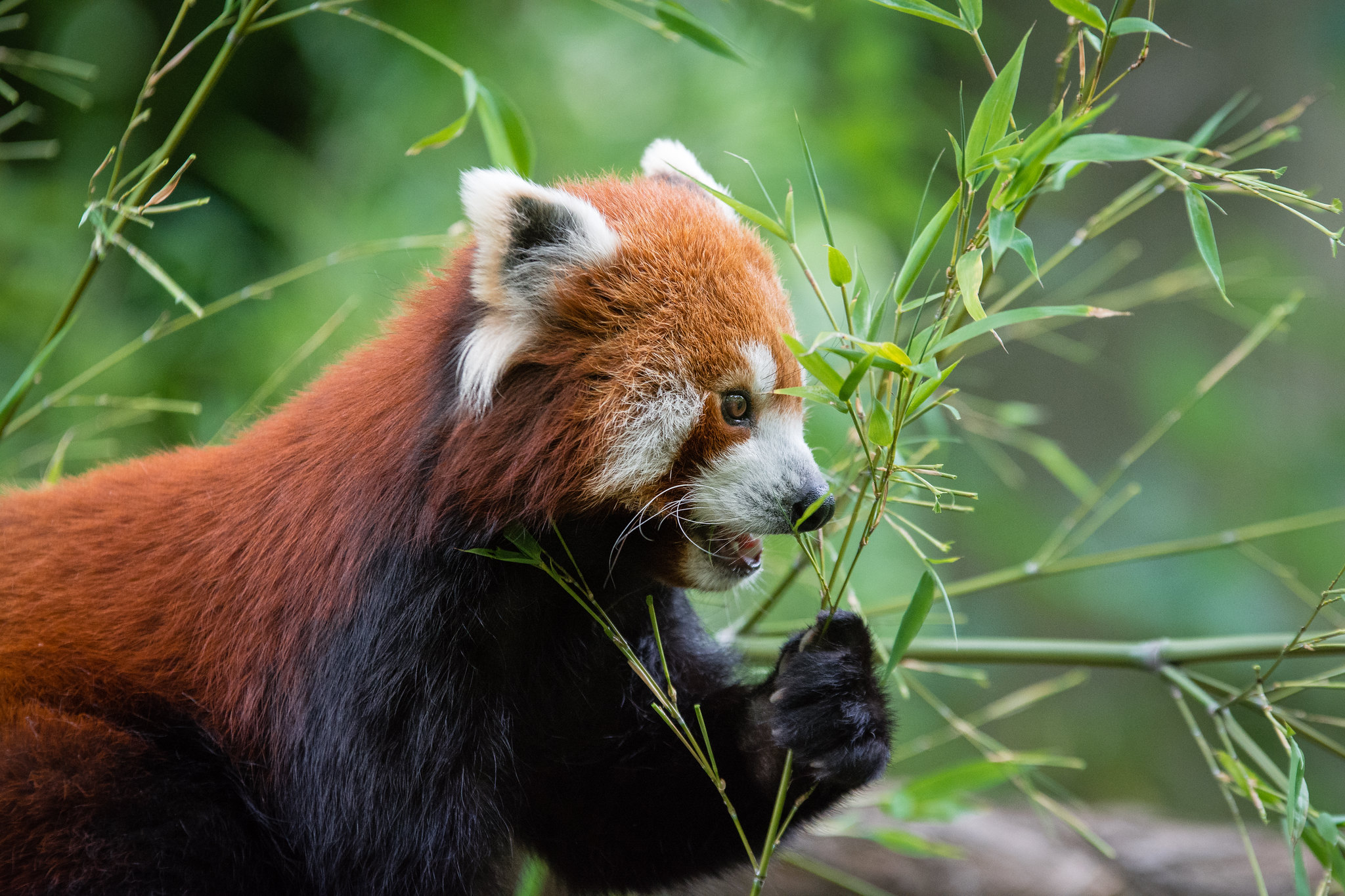 A red panda holding its favorite food, bamboo, using its pseudo thumb. © Mathias Appel
A red panda holding its favorite food, bamboo, using its pseudo thumb. © Mathias Appel
21. Sichuan, China may be the only place where red pandas and giant pandas can be spotted in the same habitat range, making it the only known area where red pandas experience competition for their main food source.
22. Female red pandas can delay implantation to allow the cubs the best chance of survival by assuring they will be born during the warmest months of the year. This also means that the gestation period of red pandas fluctuates depending on how long the implantation is delayed.
23. A few days before a female gives birth to her cubs, she gathers fallen plant material to create a nest, oftentimes in tree hollows. Throughout the first couple weeks after the cubs are born, the mother may carry them in her mouth to various nest locations as needed. The cubs will rely on the nest for safety for the first two weeks, as their only activity will be nursing.
24. When red panda cubs are born, they are covered in grayish-black fur that will turn the characteristic red color by the time they are 13–22 weeks old. Cubs also lack fur on the soles of their paws that adults have, which aids them in walking on the snow and on slippery tree branches. This is another reason why cubs are so reliant on their mother for the first 18–20 months of their lives.
Christina Barba
Writing and Communications Volunteer
Red Panda Network
Get more fascinating information on our red panda facts page!
References
https://www.wwf.org.uk/learn/fascinating-facts/red-panda
https://nationalzoo.si.edu/animals/red-panda.
https://ielc.libguides.com/sdzg/factsheets/redpanda/behavior
https://www.gbif.org/species/113392444
https://www.smithsonianmag.com/science-nature/eight-amazing-facts-about-red-pandas-180979708/
https://animals.sandiegozoo.org/animals/red-panda

